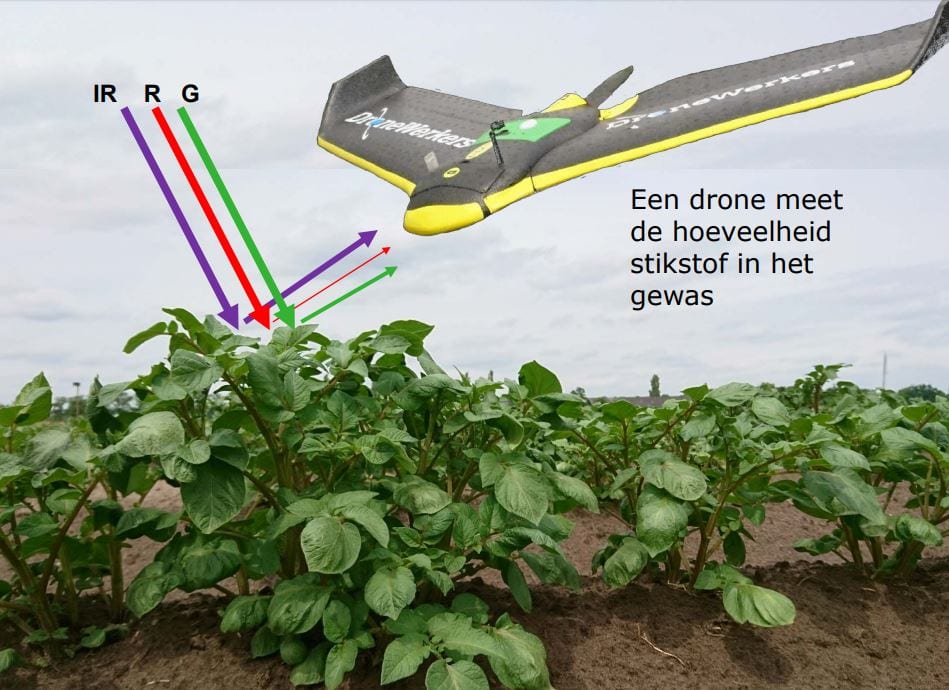In order to propose a credible alternative to intensive agriculture (a model inherited from the 1960s with disastrous environmental consequences), drone startups are developing unmanned machines, using cutting-edge technologies to help farmers become more sustainable and increase their yield.
Europe is helping to make this a global industry. How is it doing this? With a strong combination of leadership in aerospace and defence, by innovative forces developing both UAV (unmanned aerial vehicle) products and services, and industry leaders finding new ways to influence their companies by leveraging technology.
A wide range of benefits
So, what are the benefits of using drones in agriculture, exactly? Farmers can optimise spraying of pesticides in areas that need treatment, and significantly reduce the amount used, reduce water use, control crops quality and access areas that are difficult to reach with traditional farming tools.
Most farmers who use drones send the flying machines high above their plots of land, where the machines take clear and quick pictures of the fields below. Many of these devices are designed to communicate with software that uses the aerial photos to create a high-resolution map containing detailed information about crop conditions. The photos taken by the drones and mapping systems can inform farmers about irrigation, soil and infestation problems.
European startups leading the way
For instance, European startups like Switzerland-based Gamaya (founded in 2015) and France-based Delair (founded in 2011) provide visual intelligence solutions that allow farmers to capture, manage and analyze their crops, turning data into valuable insights.
UK-based startup Accelerated Dynamics, founded in 2016, has developed an operating platform to simplify the management of several UAVs. Its software solution enables farmers to use the air vehicle fleets without any training. Accelerated Dynamics’ platform integrates IoT devices such as moisture sensors and irrigation devices to monitor crops at all times and ensure that farmers increase the quality and quantity of their produce. The machines are also equipped with infrared technology used to distinguish between healthy and damaged crops. Over time, a series of photos taken by drones gives farmers a richer picture of how their crops are developing and the effectiveness of different farming methods and techniques.
Hummingbird Technologies, a British startup founded in 2016, uses remote sensing and artificial intelligence to gather imagery of arable fields from satellites, planes and UAVs and then analyse it using sophisticated machine learning techniques. From this, they create detailed insights that are crop specific, and application maps that provide actionable information to farmers and agronomists.
Challenges for spraying drones
When it comes to spraying crops, though, things are a little more complicated. Although practical applications of UAVs have progressed significantly as the technology has improved alongside a fall in cost, agriculture spraying drones have been limited to trials across Europe and have yet to be adopted by competent authorities.
For instance, France is currently running trials as a means of spraying pesticides so that by 2021 it can launch the practice as it could lead to more precise treatments, as well as a reduction in the use of phytosanitary products.
These drones, if validated, could contribute to changing the traditional agricultural landscape in Europe. The latest sales figures in France for 2018 are showing a surprising 21% increase in the use of pesticides highlighting the need to find solutions. The French agricultural sector remains highly dependent on inputs despite France’s so-called ‘Ecophyto’ pesticide reduction plan, aiming to halve the use of these chemicals since 2008.
With Switzerland being the first country in Europe to allow the use of drones to spray plants and crops in 2019, paving the way to this fast-growing industry, we should expect more countries to follow in the near future.
Looking to the future
With an expected 7 million consumer leisure drones to be operating across Europe and a fleet of 400,000 expected to be used for commercial and government missions in 2050, there is a strong need to reflect on how we are going to use them and make sure safety will always be first. Commercial applications across sectors, including agriculture, have proven beneficial, and especially when it comes to surveying or monitoring areas, drones are extremely precise.
These drones can potentially also help protect food cultures, and make them more sustainable by reducing spraying. It would be interesting to see if UAVs could be the driver for farmers to switch to organically certified products to spray over their plots of land.

